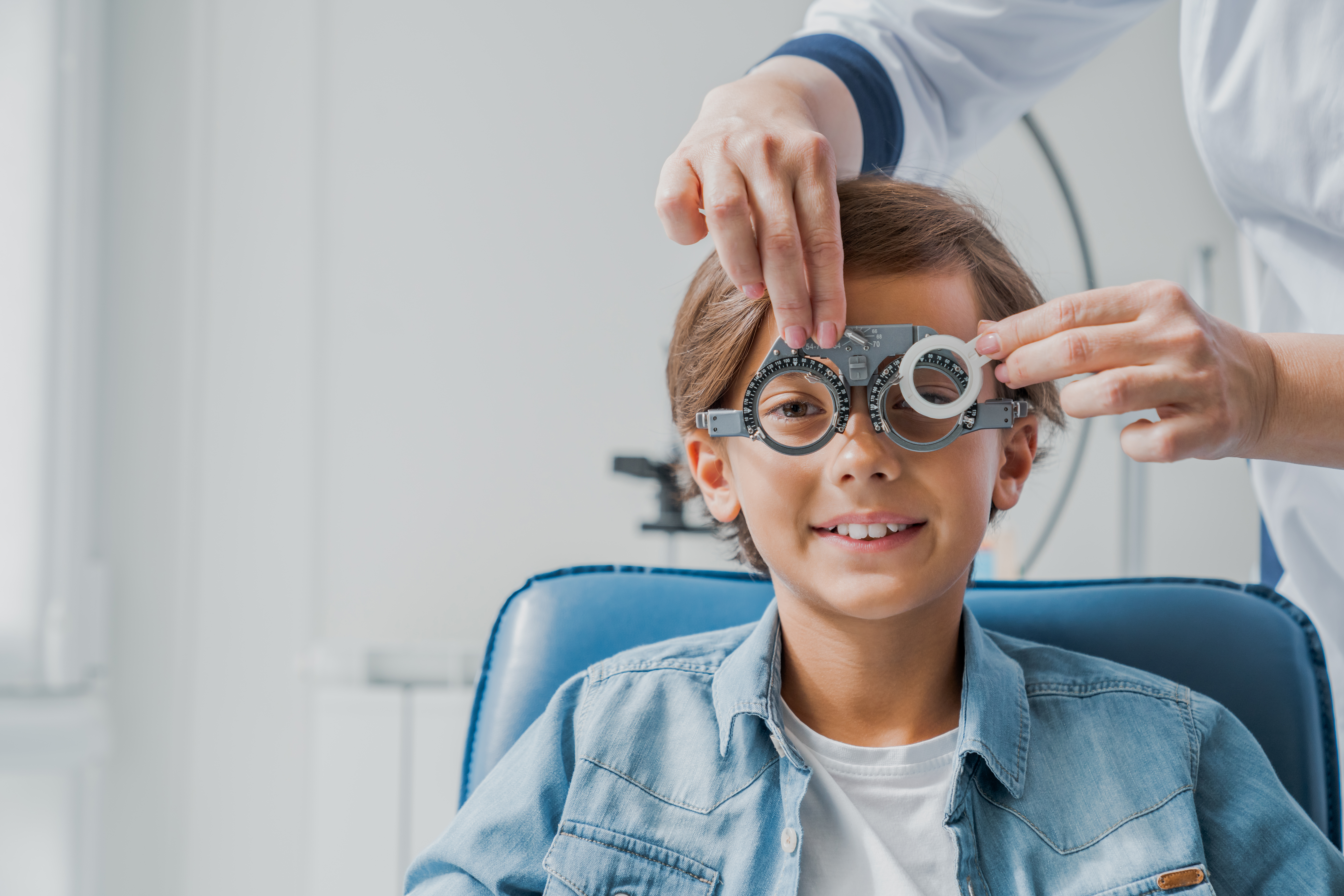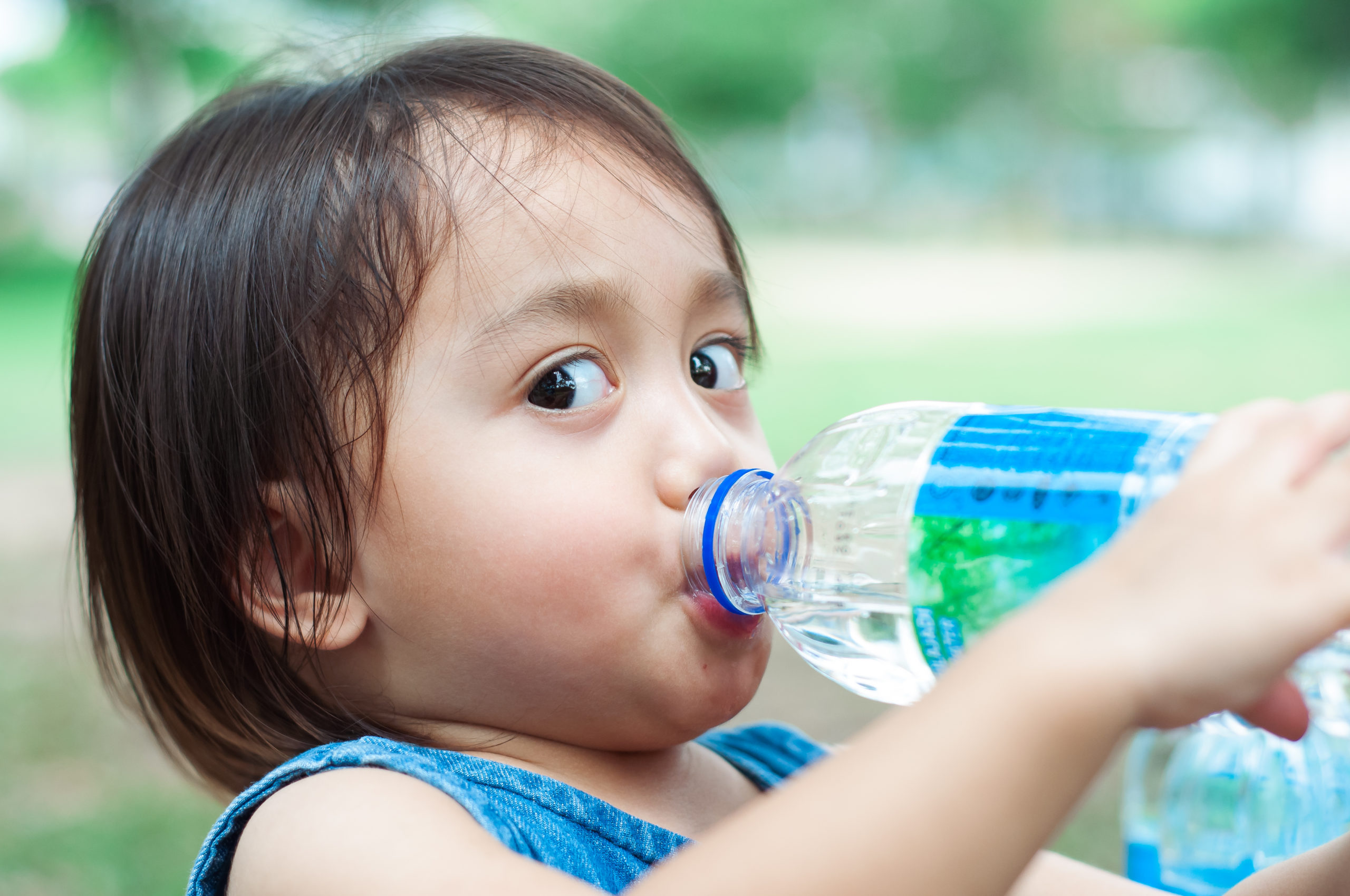
The sooner you begin addressing your child’s ocular health, the faster you may catch serious eye problems before they worsen.
August is National Children’s Eye Health and Safety Month, a great time to invest in learning about your childrens’ eye health. Understandably, some kids are squeamish about going to the eye doctor for their yearly testing. Teaching them why it’s important and what to expect during optometrist appointments can help them feel more at ease.
It’s also important to teach your children how to best protect their eyes when handling common household items, cleaning supplies, science experiments, and more. Skills you introduce to them today may very well protect their eyes tomorrow.
Strong communication and strong role modeling early in life encourages kids to stay on top of their healthcare once they grow into adults.
The Importance of Annual Eye Exams for Children
Your kids’ bodies are still growing and changing every year, including their vision. While they may seem to have excellent 20/20 eyesight, this can change gradually over time. Undetected and untreated vision problems can lead to conditions such as lazy eye or even crossed eyes, both of which are often far more difficult to address than the initial issues causing them.
Some of the most common pediatric eye conditions include:
- Astigmatism
- Myopia (nearsightedness)
- Hyperopia (farsightedness)
- Ptosis (droopy eyelids)
- Conjunctivitis (pinkeye)
- Styes
- Chalazions
- Pediatric glaucoma
- Pediatric cataracts
- Double vision
- Nystagmus
- Epiphora (excessive tearing)
- Blocked tear ducts
Children are also susceptible to genetic eye conditions, which may not always be apparent at birth. Scheduling annual eye exams for your kids is the most effective way to catch common, and not-so-common, vision issues before they grow worse.
What’s Involved in a Children’s Eye Exam?
Children can be scared to see a new doctor. So we highly recommend you take some time to explain to your child what their first eye exam may entail, if they’re old enough to understand. The prospect of having such a sensitive part of the body tested can be intimidating even for many adults, and investing in a conversation ahead of the appointment can go a long way in easing your kid’s mind.
Eye exams check for the following problems:
- The way eyes react to shifts in lighting and darkness
- Eye movement and reactions to stimuli, like a moving finger
- Eye structure
- Clouding
- Redness
- Teariness
These tests make it possible to diagnose the following conditions, listed here with short explanations to help you explain to your children what they might expect.
- Myopia/nearsightedness: The ability to clearly see things up close, but anything far away is blurry.
- Hyperopia/farsightedness: The reverse of nearsightedness. The ability to clearly see things far away, but anything up close is blurry.
- Amblyopia: What happens when one eye sees better than the other due.
- Astigmatism: Problems with the eye’s shape that can lead to blurred vision.
- Styes and chalazions: Bumps around the eye that can cause pain or compromise vision.
For kids between the ages of 3 and 5, vision tests may involve the following:
- Identifying shapes, colors, or letters on a chart
- Eye drops, which might sting a little but will not cause damage or harm. Remind them that their vision may be blurry after this.
- Lights being shined into the eyes, which may be uncomfortable but will not cause damage or harm
- Touching near or around the eyes, but almost never touching the eyeball itself
- Being asked to form a letter “E” with their hands
Tests for children over the age of five may also add on the following, which we also recommend speaking to them about:
- Identifying letters or photographs
- Dilation, which involves eye drops that increase light sensitivity. Your kid will need to wear flimsy plastic sunglasses until the dilation wears off.
- An air puff test, which shoots a small spurt of air into the eyes to measure the pressure inside them. The puff can be a bit shocking, even when expected. It may also sting, but it will not cause damage or harm
Depending on the results of your kid’s tests, you may have to consult the expertise of a pediatric ophthalmologist or an eye surgeon. In these cases, work closely with the medical professional to make sure you know how to best communicate to your child what to expect before, during, and after their appointments.
Preventing Eye Injuries in Children
Pediatric eye health doesn’t begin and end with annual appointments. According to the American Academy of Ophthalmologists, about 90% of eye injuries can be prevented through the use of proper protective eyewear and similar measures. We highly recommend that parents model safe behavior and take extra safety precautions around the house to ensure the protection of their childrens’ eyes. Parents are, in many ways, the first line of defense against eye injuries.
We greatly advise developing the following habits to keep your kids’ eyes safe:
- Hold sharp objects, such as scissors, screwdrivers, digging implements, etc., away from the face both when in and not in use
- Properly use common home items such as paper clips, rubber bands, safety pins, and other objects in ways that won’t put the eyes at risk
- Lock kitchen knives away in their drawers
- Store cleaning chemicals and similar hazards in locked, hard-to-reach cupboards
- Store glassware, ceramics, and other breakables away from small, curious hands
- Store guns—including those for paintballs, pellets, and BBs—in their lockers unloaded and separate from their respective ammo
- Wear protective eyewear when doing yard work, performing repairs around the home, using power tools, woodworking, swimming, or playing sports
- Wear sunglasses outdoors to prevent UV damage
- Wear seatbelts in the car, and properly securing any small children who may not yet have the skills to properly secure themselves
- Wear protective eyewear during science experiments, both in and out of the classroom
- Only pet domestic animals with permission from the owners, who know whether or not their pets may bite or scratch a child
- Purchase age-appropriate toys without sharp edges or accessories
- Pad sharp corners on furniture
- Set up gates at the top and bottom of any staircases
- Take regular breaks when using computer, TV, and smartphone screens for long stretches of time in order to prevent straining
- Refrain from using explosives such as firecrackers or cherry bombs without professional supervision
- Check public parks and playgrounds for any potential eye hazards before allowing play
Consult with your child’s pediatrician, optometrist, or ophthalmologist for more information about kid-friendly eye safety and health solutions. We are also available to answer questions via phone at (281) 576-0555 or through our website’s contact form.
What to do in the Event of an Eye Injury
Unlike many common injuries such as bumps, bruises, and sprains, those impacting the eye often require medical intervention due to our eyes’ highly sensitive nature. Even well-meaning first aid interventions, such as rubbing or applying pressure, can ultimately cause more harm than good.
The American Academy of Ophthalmology offers a comprehensive guide to every type of eye injury imaginable, such as scratches, punctures, and chemical burns. We highly recommend using it as a resource for knowing how to address eye-related emergencies as they come up, as well as learning some of the myths and misconceptions about which methods work for which incidents.
Answering Your Eye Health and Safety Questions
Many of us at Patients ER are parents ourselves. We understand all the concerns parents have about ensuring their children are safe and healthy, especially when it comes to their eyes. That’s why we’re committed to providing Bayton-area parents with resources to help with preventing eye injuries and promoting ocular health. Please don’t hesitate to reach out to us at (281) 576-0555 or online if you’d like to know more about protecting your kids from anything that may cause them illness or injury.

 How to Treat Heat Exhaustion & Identify Heat Stroke in Children
How to Treat Heat Exhaustion & Identify Heat Stroke in Children